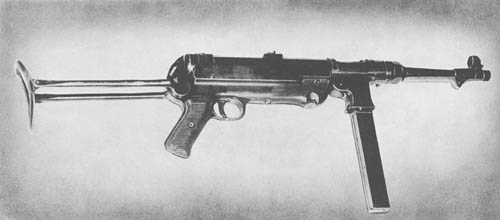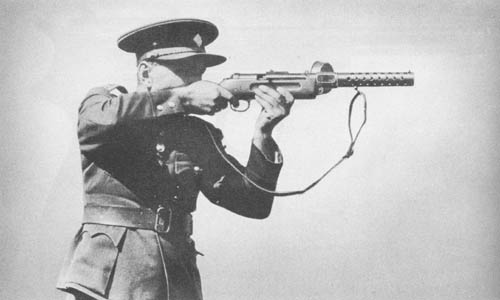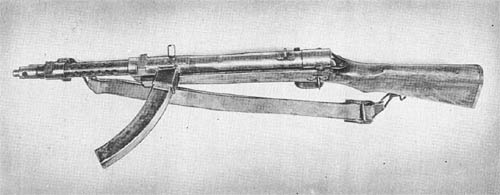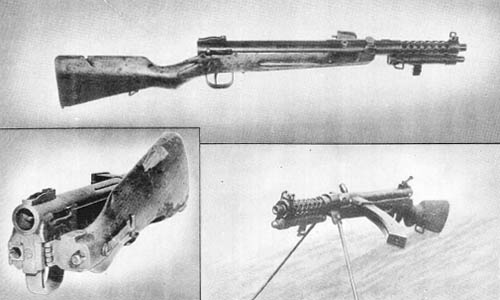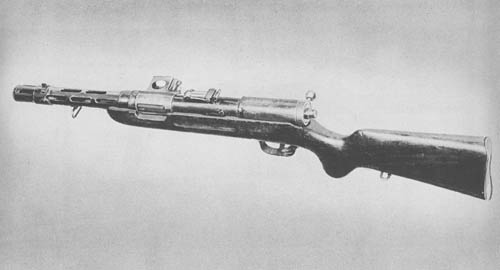
The Bergmann 9 mm machine pistol, M.P. 341, is a semi- or full-automatic, air-cooled, blow-back-operated submachine gun which is fed by a box magazine containing 32 rounds. It is manufactured commercially in Germany for use by the German Army. It is also used by other countries in modified forms. This is only one of several types of submachine guns.
The barrel and moving parts are, except for the trigger mechanism, housed in a long cylindrical tube. The forward end of this tube is perforated and forms a cooling jacket for the barrel; the rear portion serves as a receiver or housing for the bolt group. The M.P. 341, unlike the M.P. 181, is cocked by a turning bolt handle, and has a positive safety mechanism.
SPECIFICATIONS
| Caliber | 9 mm (actually .347 in.) | |
| Length | 33 ins. | |
| Length of barrel | 7 3/4 ins. | |
| Weight | 9 lb. | |
| Feed | Box magazine—capacity 32 rds. | |
| Rate of fire | 500 rds./min. (maximum) | |
| 120 rds./min. (practical) | ||
| Range | 218 yds. (effective) | |
| Sights | Front—blade | |
| Rear—Leaf on ramp, graduated up to 1,000 meters |
German: p. 204
